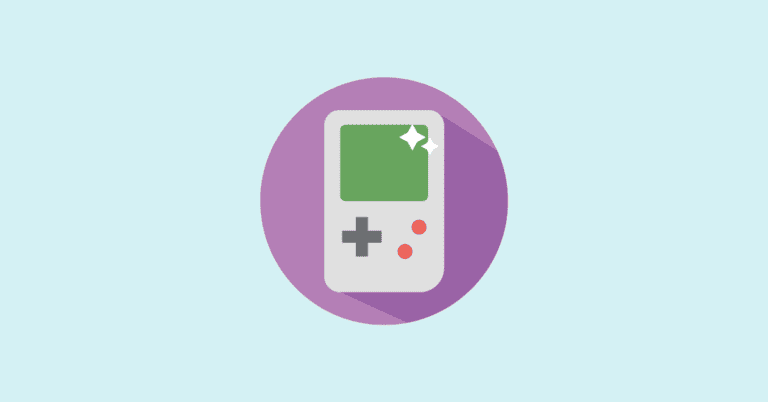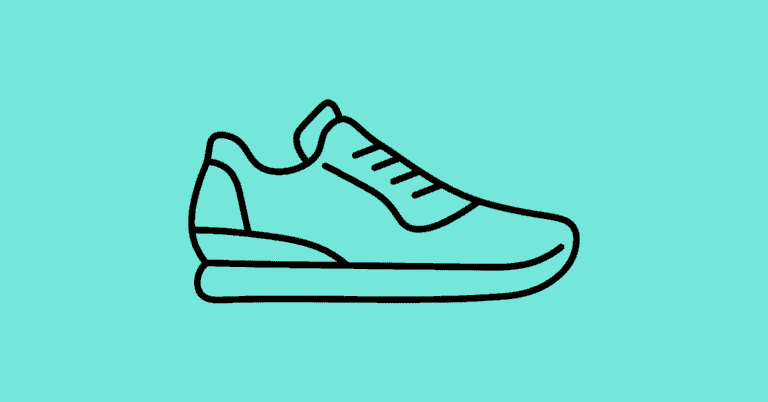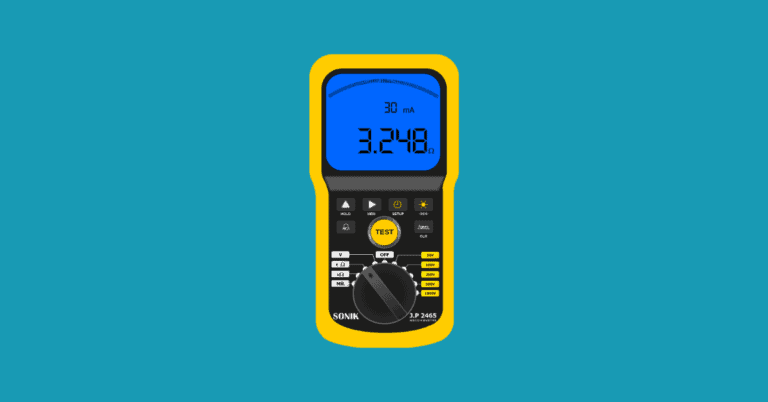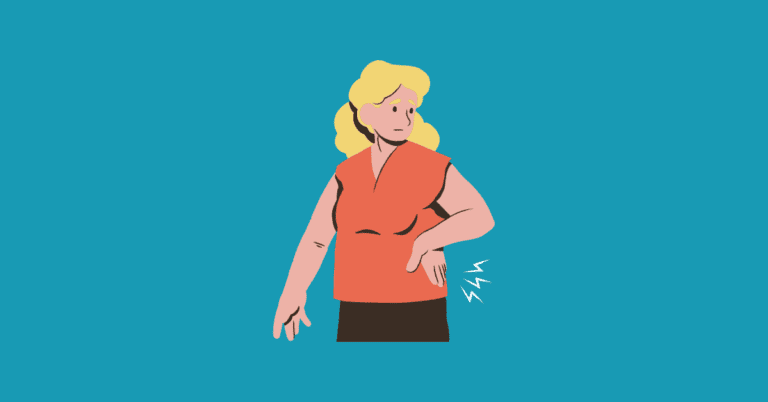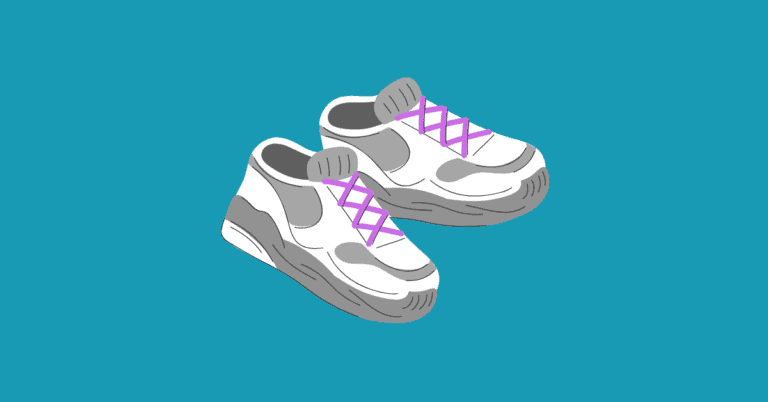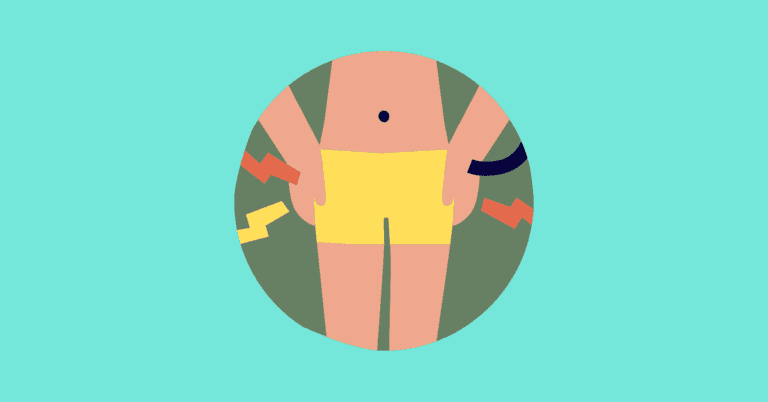Non Pharmacological Pain Management Options
What is non pharmacological pain management?
Non pharmacological pain management refers to pain-relief treatments without the use of drugs.
Pain is a tricky thing. It can be acute or chronic. It can be triggered by an injury, illness, and/or surgery, or it might have no known cause. Not to mention, there are several different types of pain. One thing all pain has in common is that it can make it difficult to function and can significantly reduce quality of life. Fortunately, the medical field has transformed pain management significantly over the past several decades. Particularly, non-drug pain management is on the rise as an evidence-based practice among professionals. Even better, these pain management strategies can be effectively used at home with minimal to no side effects. Whether you are looking to manage chronic pain, or promote injury recovery, this guide is for you.
First, this article looks into seven types of non-pharmacological pain management strategies that can be utilized at home, as listed below:
- Massage
- Transcutaneous Electric Nerve Stimulation (TENS)
- Heat Therapy
- Cold Therapy
- Postural Aids, Braces, and Ergonomic furniture
- Exercise
Then, we finish off by listing specific options for relief according to body region. Here’s your table of Contents:
- Whole-body/generalized
- Neck/Upper back
- Shoulder
- Elbow
- Wrist/hands
- Low back/Hip
- Knee
- Ankle/foot
Important Note: These are pain management strategies and just that. They do not serve to replace professional medical care for serious injuries and conditions. And they certainly don’t compensate for making efforts to improve your health, such as strength training and eating healthy. These tools are intended to aid in the healing and maintenance of health.
With that being said, let’s get started.
What are the types of pain management strategies?
Massage

Massaging has long been touted as a way to reduce pain. During a massage, your body senses the controlled friction through nerve cells, which stimulate the brain with the new sensation. In effect, these new signals distracts the brain from the original pain signals, thereby reducing pain. Additionally, massaging can help to increase blood flow, relax tightened muscles, and release endorphins (the body’s natural pain killers).
For these reasons, massage is often recommended as a way to reduce pain from chronic conditions such as arthritis, tension headaches, and fibromyalgia. While there is no cure for these conditions, massaging can help to provide relief from the pain and discomfort. A massage may also be beneficial for recovery from an injury. While it’s great to seek out a professional massage therapist, you can also use tools at home to self-massage for a more frequent routine. Overall, massaging is a non-invasive, low-risk way to manage pain that can be performed at home.
Transcutaneous Electric Nerve Stimulation (TENS)
Transcutaneous Electric Nerve Stimulation—short form TENS — is a pain relief method that uses a low-voltage electrical current. It comes with electrodes attached to adhesive pads, which stick to skin. When using it, you will experience is a tingling sensation. The mechanism behind this is that nerve fibers are activated by mild electrical impulses, which then reduce the pain signals reaching the brain. This also serves to stimulate the body to release endorphins and increase blood flow.
While TENS is commonly used in physical therapy, there are many commercial TENS units available for home-use as well. A TENS unit may be used for various types of pain, both acute and chronic such as multiple sclerosis, neuropathy, back pain, and sprains. A big advantage of TENS is that it has minimal to no side effects if used according to guidelines; you may experience an allergic reaction to the adhesive pads. For instance, TENS should not be on certain areas such as your face, rashes, or numb skin. It’s also advised to take breaks every 15-30 minutes when using a TENS device. Although a TENS machine may be purchased without a prescription, your doctor can advise you on whether it’s appropriate for you and how to use it.
Heat Therapy
Heat therapy is one of the most widely-used treatments for chronic pain. It assists muscle and joint relaxation, which in turn can alleviate pain. Specifically, the application of heat therapy to sore, painful areas promotes enhanced circulation. When using heat therapy, you can expect a decrease in muscle spasms and stiffness. In turn, this also helps recover a fuller range of motion.
Heat therapy should be applied no longer than 30 minutes at a time.Another precaution is to avoid applying heating elements (such as heat packs or pads) directly to skin; always use a layer of clothing or towel in between. While heat therapy is great for chronic pain, it should not be used with acute injuries, especially with active swelling. Overall, heat therapy is a low-risk, simple application that can be easily done at home.
Cold Therapy
Cold therapy, also known as cryotherapy, is a treatment that uses cold temperatures to relieve pain. Cold therapy can be used to treat a variety of acute and chronic conditions, including tendonitis, knee sprains, and shoulder dislocations. Applying cold temperatures to the target area helps to reduce swelling and inflammation, which in turn relieves pain. This makes it ideal for acute injuries. In addition, when you remove the cold from the area, blood flow is increased to that region, aiding in the healing process.
Cold therapy can be achieved in a number of ways, including using ice packs or ice baths, or even submerging oneself in a cryotherapy chamber. When using ice packs, it’s important to wrap them in a towel to avoid direct contact with the skin. Cold therapy should be applied for no longer than 20 minutes at a time. Like heat therapy, cold therapy is a low-risk treatment that’s easy to utilize
Postural Aids, Wearables, and Ergonomic Furniture

Postural aids and braces can be used to alleviate pain in many ways. To begin with, they improve our postural awareness. By using aids or braces, we learn what proper posture feels like, and over time, we develop muscle memory for proper posture. This is important because improper posture often leads to pain. Additionally, braces help provide support to the painful, injured areas by either distributing our body weight more evenly and reducing tension in the afflicted area. As a result, we experience less pain in those areas. This is beneficial for promoting injury recovery. Moreover, wearables such as compressive clothing and supportive shoes also fall into this category. Nonetheless, it is important to note that braces and postural aids aren’t meant for long-term use and daily dependency; they are meant to be a temporary measure to help you get relief from pain, allow recovery, and encourage better posture in the long term. Similarly, use of supportive funiture, including any equipment that is part of your daily life is important.
A big component of daily life is sleep, and interestingly enough, sleep quality also plays a role in individual pain experience. For those suffering from back and hip pain, finding the right mattress can make a significant difference. Factors such as mattress firmness, support, location of pain, and sleep position can play a role.
Further, considering how common low back pain is, the use of supportive lumbar recliners is helpful for back pain management. Consider braces and supports as only tools, used in tandem with strength-building exercises to enhance muscle function in the body’s weaker muscles.
There are different types of postural aids and braces, depending on the specific problem. For example, there are back braces that help to support the lower back and prevent slouching. There are also wrist splints that can be worn to reduce carpal tunnel pain. Ultimately, these devices and brace can play an important role in relieving pain, encouraging good posture, and supporting recovery.
Exercise

Exercise is something that should be part of your lifestyle regardless of whether or not you’re experiencing pain. With that being said, exercise can be especially beneficial for those who are in pain. For instance, light to moderate exercise can help moderate inflammation and improve mobility over time. Additionally, resistance exercises strengthen the muscles around a painful joint, which can stabilize that joint and prevent further harm. Another significant benefit is that exercise releases endorphins— the body’s natural pain killers—which help minimize pain and improve mood.
Of course, when you’re in pain, the last thing you probably want to do is exercise. However with chronic pain, the purpose of exercise isn’t to go big or go home – it’s simply to get moving and help your body in the long run. Start slow and take it at your own pace. There are a variety of different exercises that can be beneficial for pain relief. For example, low-impact cardio like swimming or walking can help improve circulation without putting too much stress on the the joints. Yoga, tai chi, and stretching are also great options. Ultimately, the best exercise for you is the one that you’ll actually do. So find something you enjoy.
Alright, now here is your list of effective pain management options:
Whole-body/Generalized Options
1. TENS unit
A TENS unit is a small, portable device that uses electrical stimulation to relieve pain. The unit attaches to the skin with adhesive pads, and the electrical impulses are delivered through the pads to the underlying muscles and nerves. TENS units can provide significant pain relief for many people, and they are a convenient and easy-to-use option for managing acute and chronic pain. There are many useful TENS units; A few things you may want to consider are the power potential, ease of use, battery life, and number and size of pads (larger pads are recommended for bigger target areas, such as back).
2. Massage guns
Massage guns are increasingly popular for their ability to provide targeted pain relief. Also known as percussion massage guns, these devices use rapid vibration and repetitive motion to massage the targeted area. This can help to relieve tension and reduce inflammation by increasing blood flow to the affected area. While massage guns are well known in the fitness community as a tool to relieve muscle soreness, they can also be used to manage pain in most areas of the body, including legs, hips, back, and shoulders.
3. Cold Packs and wraps
Cold packs are a classic cold therapy option. While ice packs are still an effective option, gel packs are becoming a great home option since they are easier to use and reusable. Another benefit of gel packs is that most can be heated in the microwave so these “ice packs” can also be used for heat therapy. Remember not to apply these packs directly to skin; always use a towel or use over clothing.
4. Heat wraps and pads
These wraps/pads consist of moist or dry heat that is applied to the skin in a targeted area. Similar to cold packs, it’s important to not apply a heat wrap/pad directly to your skin. Always keep a thin layer of fabric or other material between your skin and the pad to ensure safety.
5. Paraffin baths
Paraffin wax baths are often seen as a luxury treatment at spas for rejuvenating dry skin and relieving stress. However, they are also a method of applying moist heat to stiff joints and aching limbs. They are particularly beneficial for chronic conditions such as arthritis, tendonitis, and fibromyalgia. As the name suggests, the treatment involves completely immersing the affected limb in melted paraffin wax. When you lift the limb from the wax, it forms a layer over the affected location. It temporarily keeps the heat inside, relaxing the surrounding muscles and tissues. Paraffin wax baths are safe to use, so long as you follow the rules. For instance, paraffin wax treatment should not be used on open sores or if you have numbness in your hands.
6. Massage chairs
Massage chairs are another helpful option for full-body relief. These types of chairs use a variety of modes and settings to deliver targeted pressure to sore or aching muscles, helping to relax and soothe tired or tense areas of the body. Whether you’re dealing with chronic pain, muscle tension due to exercising, or just the simple stress of everyday life, using a massage chair can be an excellent way to help ease your discomfort. With features like customizable intensity settings and adjustable pressure massage nodes, these versatile devices can help provide relief for all sorts of problems. One thing to consider is that massage chairs can be pricey, so consider your options before investing in one.
7. Sauna
Saunas have been used for centuries as a way to relax and promote wellbeing. In recent years, saunas have gained popularity as a means of pain relief. There are two main types of saunas: dry saunas and wet saunas. Dry saunas use dry heat, typically from infrared lamps, to raise the temperature of the air in the room. Wet saunas, on the other hand, use steam to increase the humidity as well as the temperature. Both types of saunas can be effective for pain relief. In addition, the relaxing effects of the sauna can help to ease stress and tension, which can contribute to pain. Of course, installing an actual sauna may not be practical for everyone. However, there are portable saunas that are just as effective and way more cost-efficient.
8. Full-body vibrating massage mats
These mats are generally designed using either vibrating motors to stimulate the surface of the skin, delivering gentle vibrations that help to break up tension and trigger the release of endorphins. By stimulating nerve endings in the skin, these mats can also promote blood flow and reduce muscle stiffness, thus providing relief from pain. While they are particularly effective for back pain, many people find that use of a full-body vibrating massage mat helps to reduce stress and promote deep, restorative sleep.
9. Coolant Sprays
Coolant sprays are often used for pain relief, particularly in cases of muscle pain or sports injuries. The spray works by rapidly cooling the area of application, which can help numb pain receptors and reduce inflammation. Coolant sprays are generally safe and well-tolerated, but they should not be used on open wounds or broken skin. When using a coolant spray, it is important to follow the instructions on the label carefully in order to avoid skin irritation.
10. Trigger point massager
A trigger point is a tight area within muscle tissue that causes pain. A trigger point massager is a manual tool that applies pressure to these areas to relieve pain and promote relaxation. They come in a variety of shapes and sizes, and can be used on different areas of the body. Trigger point massagers are effective for targetting localized pain. For instance, they are a popular choice for people who experience chronic neck pain or muscle spasms.
11. Kinesiology tape
Kinesiology tape is a type of adhesive sports tape that has become increasingly popular in recent years. Initially designed to support injured muscles and joints and provide pain relief, KT is believed to lift the skin away from the soft tissues underneath, which helps to relieve tension in the muscles and reduce any swelling or inflammation. While the results of scientific studies are inconclusive, KT does seem to make a difference in providing pain relief for some.
12. Foam Roller
A foam roll helps relieve muscle tension and adhesions by compressing connective and muscle tissues. It can be effectively used on areas such as the upper back, hip flexors, and hamstrings.
Neck, Upper Back, & Shoulder Options

13. Cervical support brace
While cervical supports are vital after trauma or neck surgery, they can also be used for general neck support from minor strains and injuries. Like all support braces, cervical collars are not meant for long-term use.
14. Cervical traction support pillow
Cervical traction support pillows are used by many individuals suffering from chronic neck pain. These pillows are designed to help reduce stress on the neck and ease compression in the spine, thereby resulting in less discomfort and improved mobility. They do this by using gentle pressure and appropriate supporting structures to gently stretch or elongate the cervical vertebrae of the neck. Another purpose of this pillow is to support correct cervical alignment; in particular, it helps correct muscle imbalances associated with forward head posture or “the upper back slouch” posture by stretching the tightened muscles of the neck. Most cervical traction pillows are not made for overnight use; Depending on the type of pillow, it is generally advised to use for 10-30 minutes for results.
15. Shoulder brace
Shoulder braces are commonly used for recovery and pain management. While they are effective at helping to alleviate the symptoms of injuries like sprains or strains, shoulder braces can also be used to manage chronic pain conditions like arthritis or bursitis, which can cause ongoing discomfort and weakness in this area of the body. By providing extra support and compression, these braces can help to minimize inflammation and relieve pain. There are a great number of quality shoulder braces to pick from. So, think about the characteristics you desire, such as hot/cold therapy or support for sports/daily activities, when making your selection.
If you are looking for a shoulder brace to provide support during activity, then you will want to choose one that offers more structure and stability. For example, neoprene braces with adjustable straps can be effective at providing extra support during physical activity. If you are seeking relief from chronic pain or discomfort, then may a brace that offers heat therapy may be more beneficial.
16. Posture corrector
Posture correctors generally refer to devices that can be worn to improve alignment and relieve pain. While this refers both to braces and monitoring systems that offer instant feedback, it can also include tools that elongate the tightened muscles that contribute to poor posture. For instance, the backpod is great for upper spine relief as it allows you to lengthen chest muscles, which helps correct hunched shoulder posture.
17. Acupressure pillow
By applying pressure to the target area of your body, it allows your muscles to release tension and encourages blood flow. Remember to start slow and use the pillow for no longer than 30 minutes at a time.
Wrist, Hand, and Elbow Options

18. Elbow brace
Elbow braces come in different types, such as elbow bands, compression sleeves, immobilizers, and wraps. They are beneficial for many elbow conditions, such as computer elbow, tennis elbow, and tendonitis.
19. Wrist brace
Similar to elbow braces, wrist braces also come in different shapes and sizes depending on their function. These are helpful for injuries, carpal tunnel syndrome, tendonitis, and arthritis.
20. Hand & wrist massager
Specifically designed for wrist and hand relaxation, these massagers come equipped with multiple compressions and settings; most also come a heat function for added heat therapy advantage.
21. Electric heated gloves
Heat gloves are known for their use to manage arthritic symptoms. They can also be used for carpal tunnel syndrome, spasms, stiffness, and chronic hand-related pain.
Low Back & Hip Options

22. Back brace
A back brace helps to stabilize and reduce the pressure on the spine. While they are a significant support during post-operative recovery, they also aid conditions such as lumbar disc herniation, spondylosis, and osteoarthritis. There are many different types of back braces available, ranging from mild support to rigid frames. With proper use and care, a quality back brace can be an effective tool for managing pain and getting on the road to recovery.
23. Back massager pad
These pads can be placed on any chair, and provide a soothing massage that can help to relieve pain. The massager pads come with a variety of settings, so you can customize the intensity of the massage to your needs. In addition, the pads are portable, so you can take them with you when you travel.
24. Acupressure cushion
Acupressure cushions specifically target the lower back. They are recommended to use for 20 minutes at a time. While you may experience discomfort at first, it should eventually give way to a feeling of relaxation.
25. Hip compression brace
Hip compression braces are designed to provide support and stability to the hip joint. They help to relieve pain by reducing the stress on the joint and surrounding muscles. While hip braces are mostly used after surgery or injury, they can sometimes be used for sciatic pain and support during exercise to help strained hip muscles.
Knee & Leg Options

26. Knee brace
There are different sorts of knee braces, each developed to mitigate specific knee problems. This includes knee wraps, patellar straps and hinge knee brace. When choosing the right one for you, consider the level of compression, flexibility, and protection.
27. Knee massager
Knee massagers use compression, massage, and heat to improve circulation and provide relief. They can be a useful way to target chronic knee pain, especially from arthritis.
28. Compression leg massager
Compression leg massagers typically consist of a set of tubular or inflatable sleeves, which surround the leg and feet. The sleeves then apply pressure and massage to the legs, stimulating blood circulation and healing. These massagers are a frequent choice for athletes and anyone else who suffers from common aches and pains in the legs and feet.
Ankle & Foot Options

29. Ankle cryo cuff
The ankle cryo cuff is a medical device that helps to reduce pain and swelling in the ankles. The cuff attaches around the ankle and uses cold therapy to numb the pain. The cuff is ideal for acute ankle injury recovery and post-surgical recovery since it helps reduce swelling and inflammation.
30. Shoes
A good pair of shoes can provide proper arch support, cushioning, and foot alignment. Of course, the best pair for you depends on your particular needs. For example, for people with plantar fasciitis and heel spurs, they may need to consider shoes with plushier cushioning and a greater heel drop. In addition, shoes can also be tailored for specific activities, such as long distance walking on concrete, running, and cutting activities.
31. TENS foot massager with infrared heat
TENS foot massager usually consists of a device that is placed on the bottom of the foot, along with several integrated heating elements. When activated, the TENS unit sends mild electrical pulses through the nerves in your feet, which triggers natural pain-relieving chemicals to be released in the brain. Additionally, infrared heat from the heated plates helps to boost circulation and loosen tense muscles, providing an all-around soothing sensation.
32. Cold therapy sock
Cold therapy socks are a convenient and effective way to manage pain through reduction of inflammation. They can be worn during the day or at night, and they provide relief for a variety of conditions, including plantar fasciitis, neuropathy, and achilles tendonitis. Cold therapy socks are recommended to be worn for 10-15 minutes at a time.
33. Foot massager machine
Whether you’re suffering from general discomfort or a particular ailment, massagers are utilized by many people. These massagers use vibration, kneading, and other movements to help ease aches and pains in the feet.
34. Ankle brace
Ankle braces are most often used after an ankle injury. They are also commonly used as a preventative measure for chronic ankle instability. Some ankle braces also include pads or inserts for additional support. Wearing an ankle brace can help to reduce swelling, improve range of motion, and prevent future injuries. For people with chronic pain or disability, an ankle brace can also help to improve mobility and independence.
35. Acupressure foot mat
Standing on a foot acupressure mat helps to relieve pain by promoting endorphin release and blood circulation. They may help with both chronic diseases and general health.
36. Foot insoles
Foot insoles are a popular tool for anyone who experiences foot pain. Their main function is to provide cushioning and support, helping to reduce the pressure on sensitive areas like toes and arches. In addition, they can prevent slippage by adding extra grip in places where your feet tend to move around a lot, such as the heel or the ball of your foot. Some insoles are designed specifically to alleviate pain or discomfort related to specific conditions like plantar fasciitis or flat feet. Overall, foot insoles are a simple but effective way to reduce pain and improve comfort while you walk or exercise.
Takeaway
Pain is personal. There are no one-size-fits-all when it comes to pain management. It is important to find what works best for you. As stated, the above options are not cures. In the case of injuries or severe pain disorders, it is important to reach out to a medical professional.
